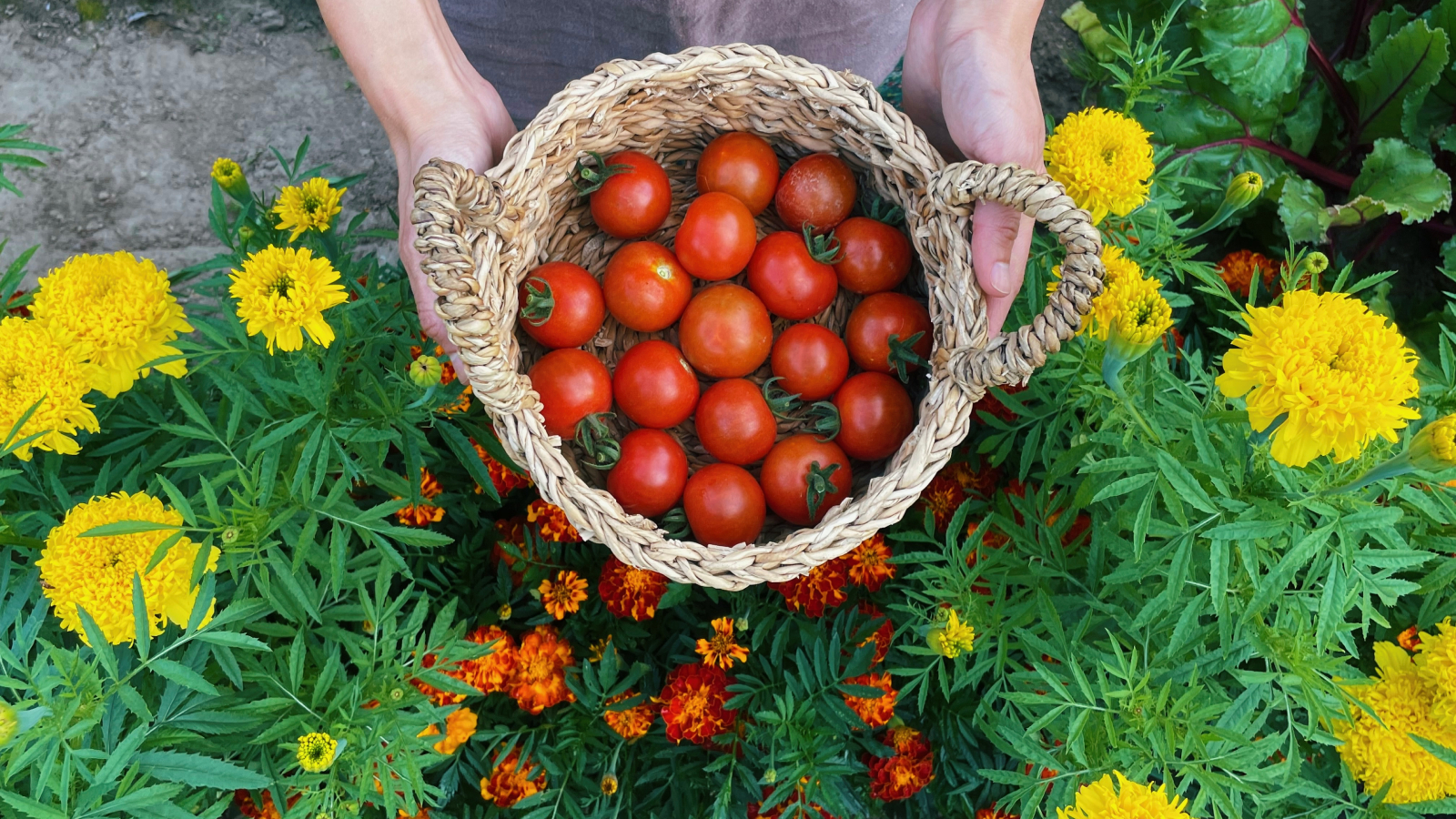
You love your tomatoes, but it appears someone else has a taste for them too. Lo and behold, upon closer inspection you see the culprit: a bright green caterpillar with a vicious looking horn-like appendage poking out of its back end. As if this isn’t alarming enough, you note damage to the plant’s foliage and even nibbles in the fruit. It seems you are now on familiar terms with the tomato hornworm, one of the top tomato pests.
Equal to the worm's fierce appearance, the tomato hornworm can cause major damage to any member of the Nightshade family with a particular affinity towards tomato plants. Equal parts disgusted and unnerved, you wonder how to get rid of tomato hornworms. After learning how to grow tomatoes, proper care and vigilance are the first lines of defense, but what else can you do to repel these nasty tomato plant pests?
What Are Tomato Hornworms?
Tomato hornworms are large caterpillars that measure about 3-5 inches (8-13 cm) in length. They grow in the five-spotted hawk moth which has an impressive 4-5 inch (10-13 cm) wingspan and can be found by the light of the moon as it flits from bloom to bloom sipping nectar.
These moths lay small green eggs on the foliage of vegetables in the Nightshade family each spring. When the eggs hatch, the young tomato hornworms gnaw on plants for up to 4 weeks and can irrevocably damage your plants.
The tomato hornworm may be confused for its cousin, the tobacco hornworm. While both have a fearsome horn and brilliant green color, the tobacco hornworm’s horn is reddish in color and its body is decorated with diagonal markings, as opposed to the V-shaped markings of the tomato hornworm.

Plants That Repel Tomato Hornworms
You’ve probably heard of companion planting, which is a method of growing different plants together for the benefit of one or both of the plants. They can benefit each other by providing weed suppression, pest control, soil improvement, shade for root systems, or to act as a growing support.
In the case of the tomato hornworm, tomato companion plants may be situated near your plants to either deter the caterpillar, act as a trap plant, or to attract predators that will eat the pest. Here are some of the best companion plants to repel tomato hornworms.
Sign up for the Gardening Know How newsletter today and receive a free copy of our e-book "How to Grow Delicious Tomatoes".
1. Basil

It is said that basil not only repels tomato hornworms, aphids, and thrips, but it can also improve the flavor and yield of the tomatoes when it’s grown near them.
Try a combination of basil varieties for a beautiful display and delicious additions to Italian-inspired meals. This mix of culinary basil seeds from Amazon is a great option for gardeners who want a mix of flavors and foliage colors.
2. Borage

Another herb that repels hornworms is borage. This cucumber-flavored herb has star-shaped blue blooms. It not only keeps tomato hornworms away, but it also attracts bees and predator wasps.
3. Dill
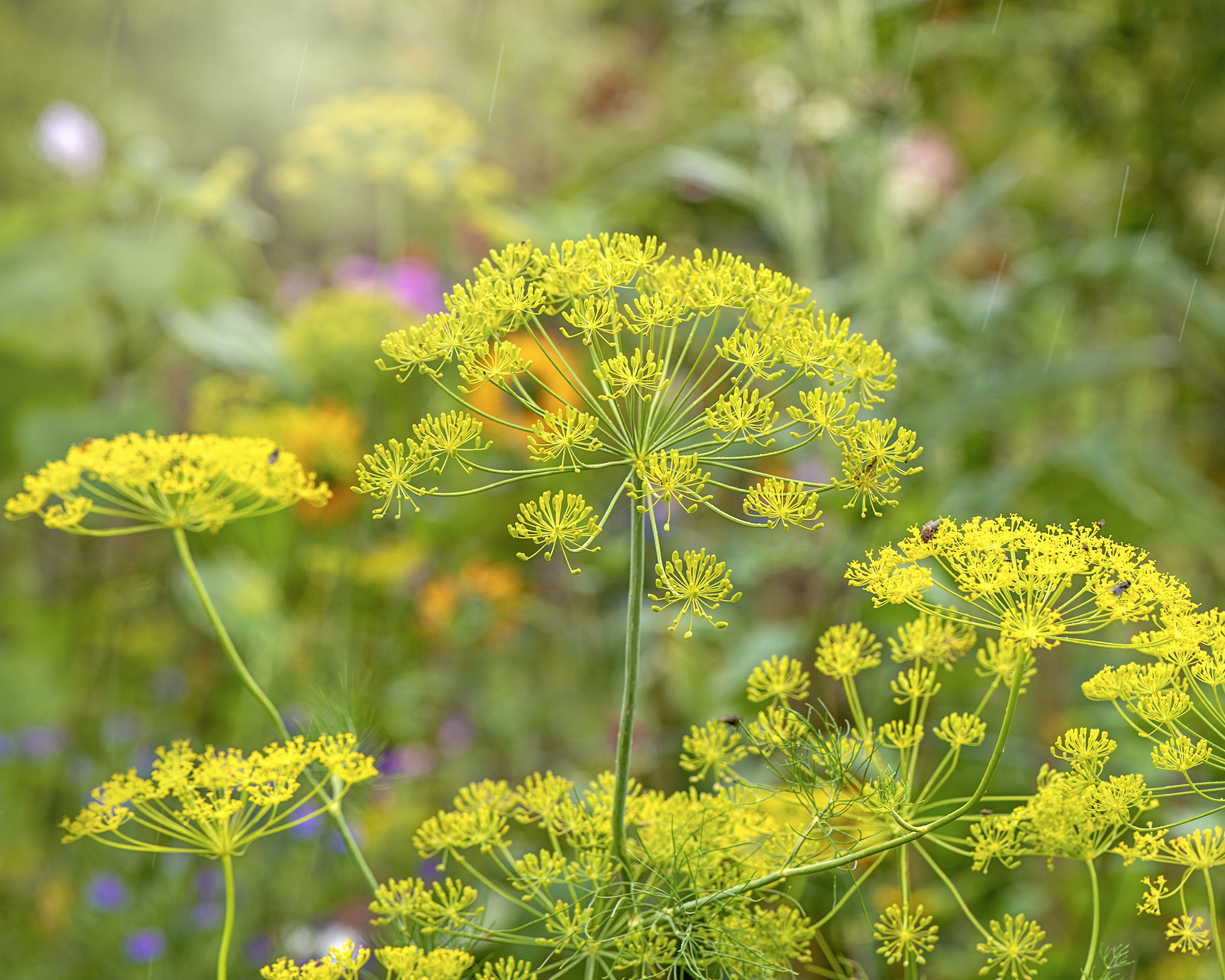
Dill is often used as a trap crop, luring the hornworms away from the tomatoes and onto the herb itself. Plant it around tomatoes to protect plants and as a delicious complement to garden veggies in a variety of dishes.
For a quick harvest that's ready in only 55 days, try growing 'Bouquet' dill seeds you can get on Amazon. The yellow blooms look beautiful and are edible, too!
4. Nasturtiums

Nasturtiums are also used as a trap crop, enticing the tomato hornworms away. The scent of nasturtiums is also said to repel the parent moths that lay the tomato hornworm eggs.
5. Marigolds
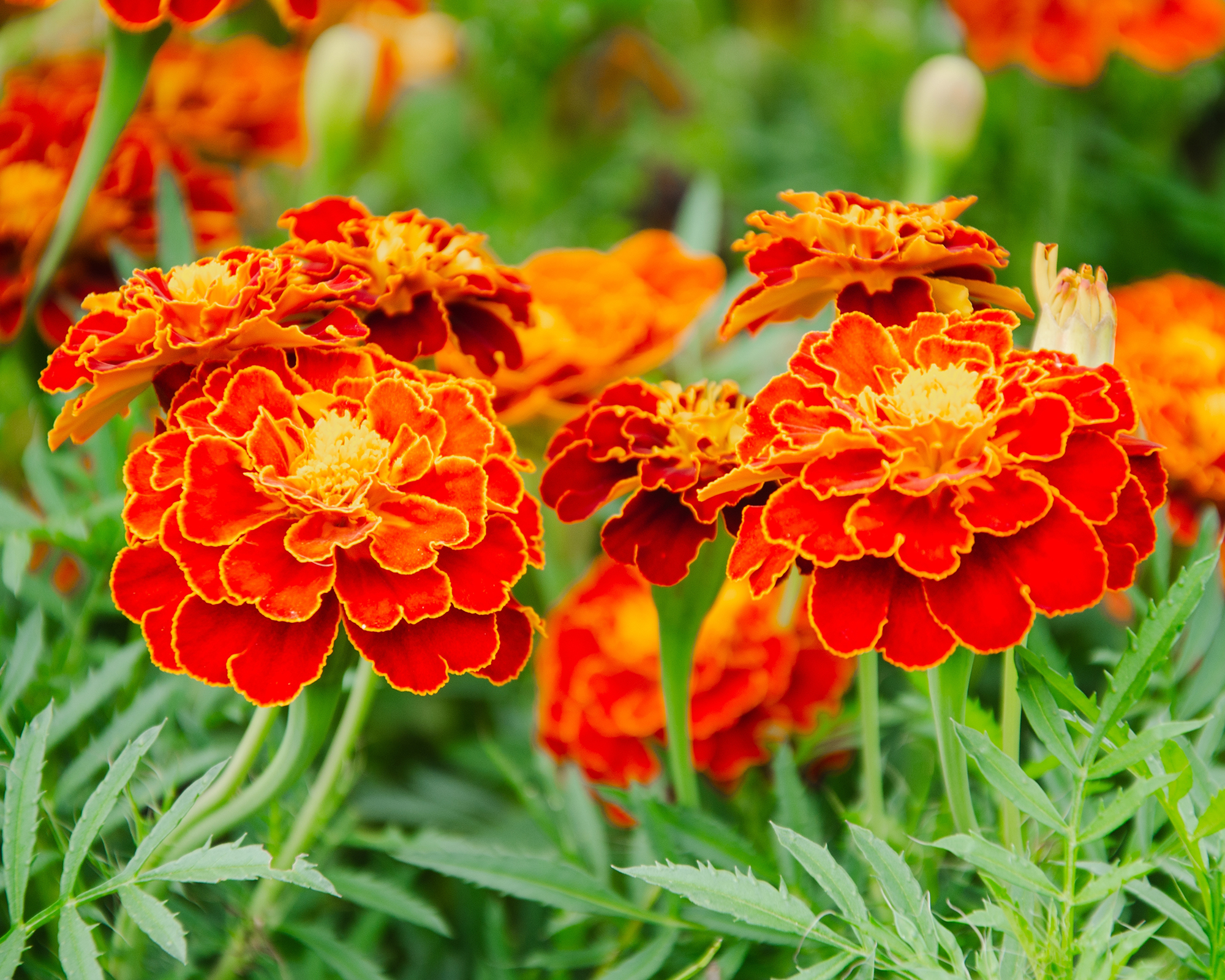
Marigolds are the quintessential companion plant, said to keep any number of pests at bay. Their strong aroma repels the five-spotted hawk moths that lay the tomato hornworm eggs.
For a lovely mix of blooms as well as protection against tomato hornworms, try this lovely mixed marigold seed pack from Amazon that comes in a fun combination of colors, ranging from bright yellow to deep red.
Plant Combos to Attract Tomato Hornworm Predators
Tomato hornworms have a number of natural predators including parasitic wasps, ladybugs, and green lacewings. Another way to manage or deter hornworms is to encourage the presence of these beneficial insects by including plants that are attractive to them. Here are some of the best plant combinations to include in your garden to defend against tomato hornworms.
Yarrow, Dill, Parsley, Cilantro
The perennial yarrow blooms in a variety of colors and looks as attractive to gardeners as it does to braconid wasps that lay their eggs on the hornworms. Braconid wasps also prey on tobacco hornworms, cabbage worms, and other pests. So they’re great to include in your garden for a variety of pest problems.
The erupting parasitic larvae of these predatory wasps then use the hornworm as a food source, resulting in something straight out of a horror movie. Other plants that offer food and habitat for this parasitic wasp include dill, parsley, and cilantro.
Sweet Alyssum, Chamomile, Catmint
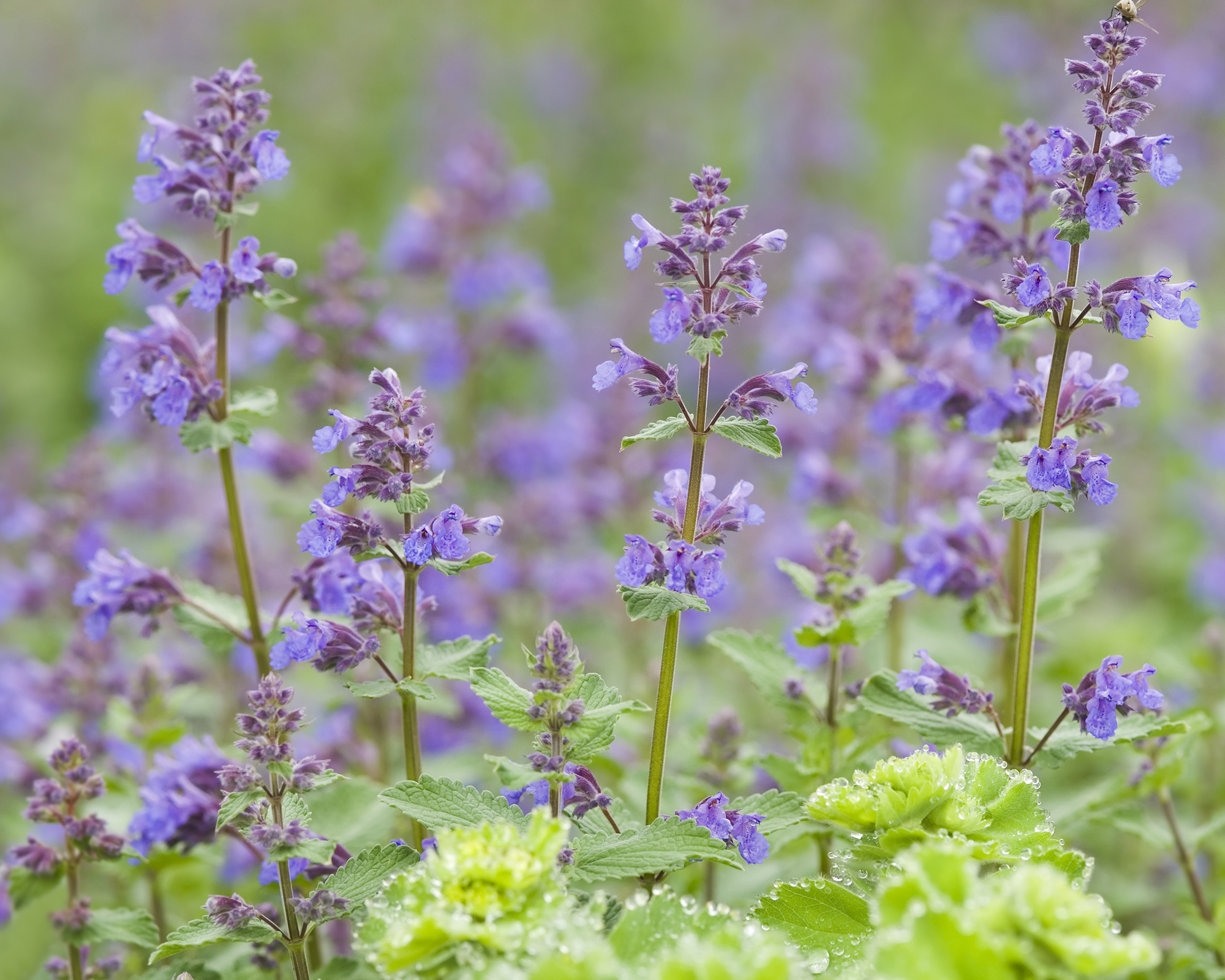
There are several tomato flower companions that can help banish pests, but using a combination of blooms can boost the repelling effects as well as the beauty in your garden.
Sweet alyssum produces numerous small blooms that are rich in nectar. It and others such as chamomile, with its tiny daisy-like blooms, and purple-flowered catmint attract braconid wasps that lay their eggs on tomato hornworms, turning them into a smorgasbord for their young.
Queen Anne’s Lace & Fennel
Queen Anne’s lace and fennel herb also act as a food source for parasitic wasps as well as providing nectar for other beneficial insects. Fennel not only attracts parasitic wasps and other beneficial insects, but its strong scent repels the hawk moth before she can lay her eggs.
Companion Planting Tips
Companion planting is not based on any real scientific data, at least not yet. Most of the information on companion planting has been gleaned from farmer’s almanacs and gardening tales passed down for generations. This means that there are no hard and fast rules for companion planting, but as a longtime gardener, I do have some tips for you on how to rid your vegetable garden of pests naturally.
First of all, don't abandon crop rotation. Plant companion plants as close together as possible without crowding them. Always plant tall plants toward the back and shorter crops at the forefront.
Plant herbs. Most common garden herbs are known to repel pests with their aromatic aromas or attract beneficial pollinators with their nectar rich blooms. Stinky alliums and garlic deter not only some insect pests, but four-legged varieties like rabbits and deer as well.
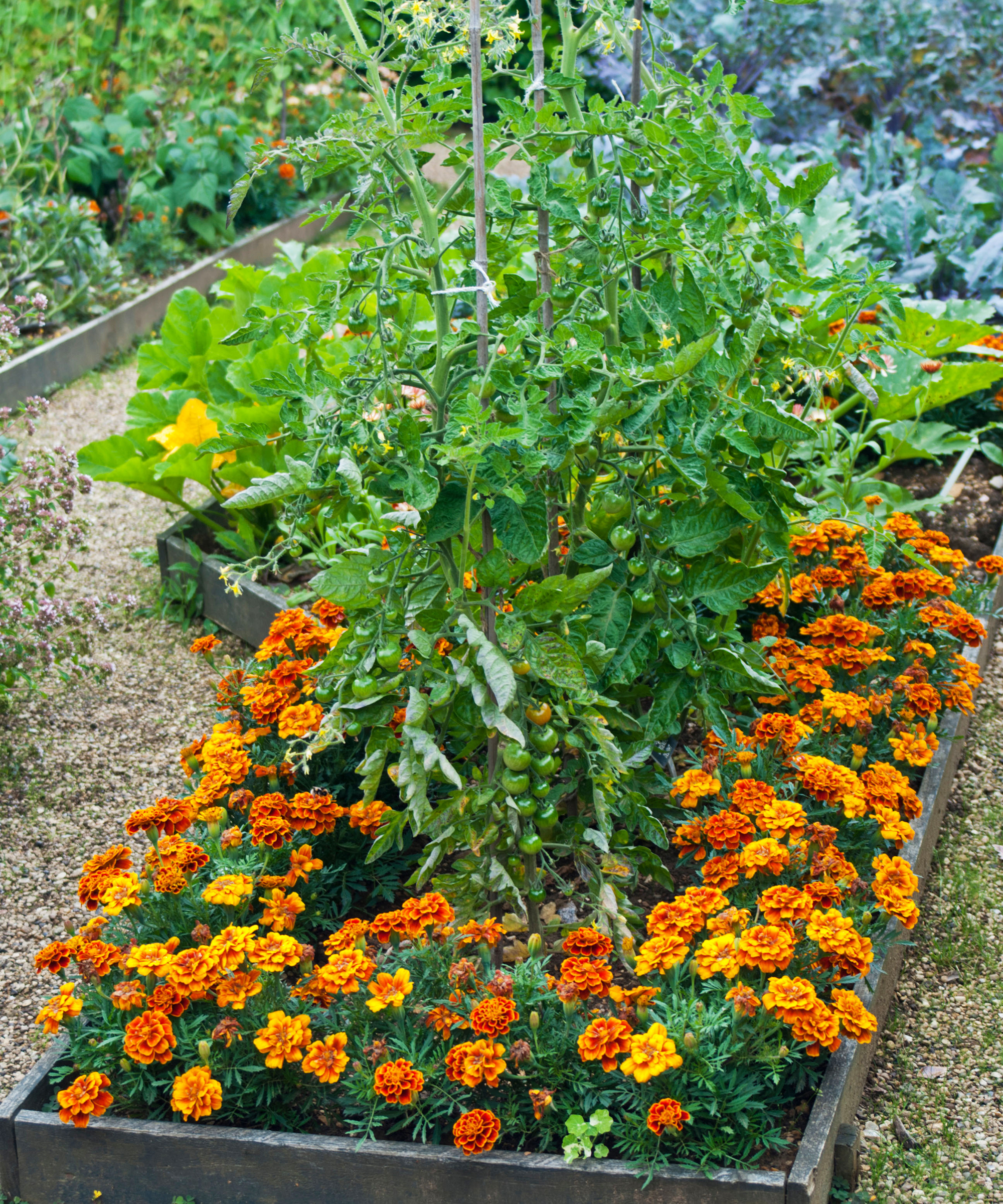
Make sure that your companion plants have similar growing requirements. You can’t plant a shade lover with a sun worshipper or a plant that loves consistently moist soil with a drought-tolerant herb.
In the same vein, you don't want to plant two species that are heavy feeders, such as tomatoes and corn, together since they will try to outcompete each other for water and nutrients. Corn will also eventually shade out your tomatoes.
Avoid planting crops from the same family together. This is a bit like putting all your eggs in one basket. In other words, if one plant gets a disease, it is likely the other related plants are susceptible as well and will catch it. Then you have two dead plants. The same goes with plants plagued by the same pests.
Finally, keep a garden diary of your plant combinations. After a couple of years, you will have a good idea about which plants work best when grown together in your garden.

Amy Grant has been gardening for 30 years and writing for 15. A professional chef and caterer, Amy's area of expertise is culinary gardening.
